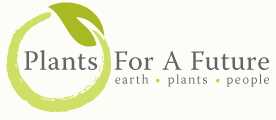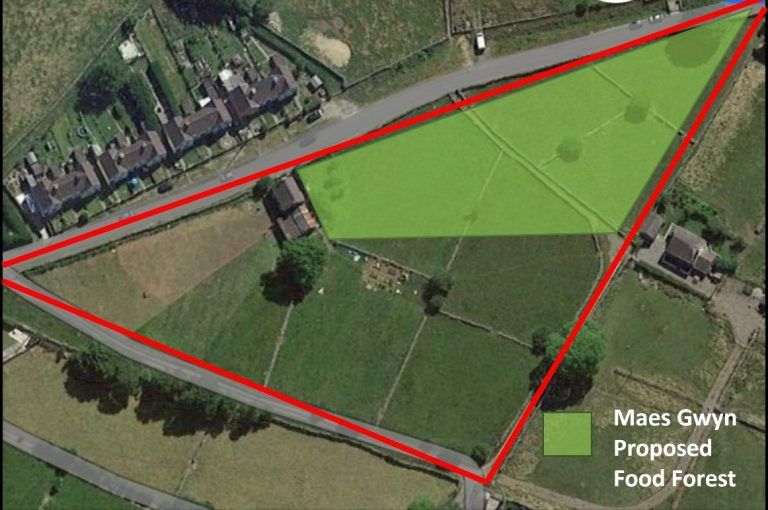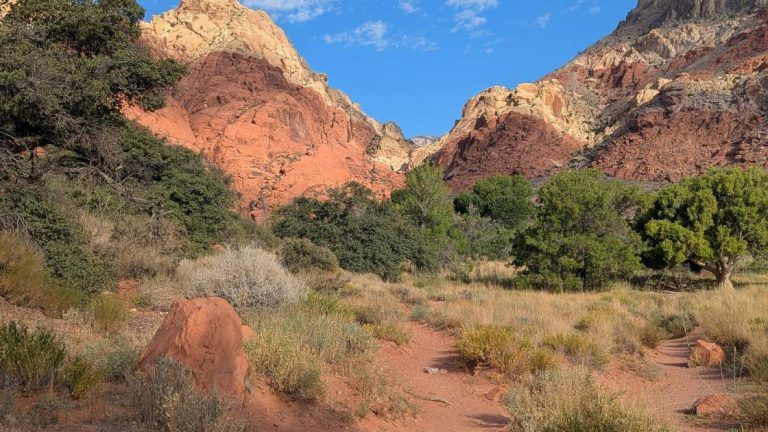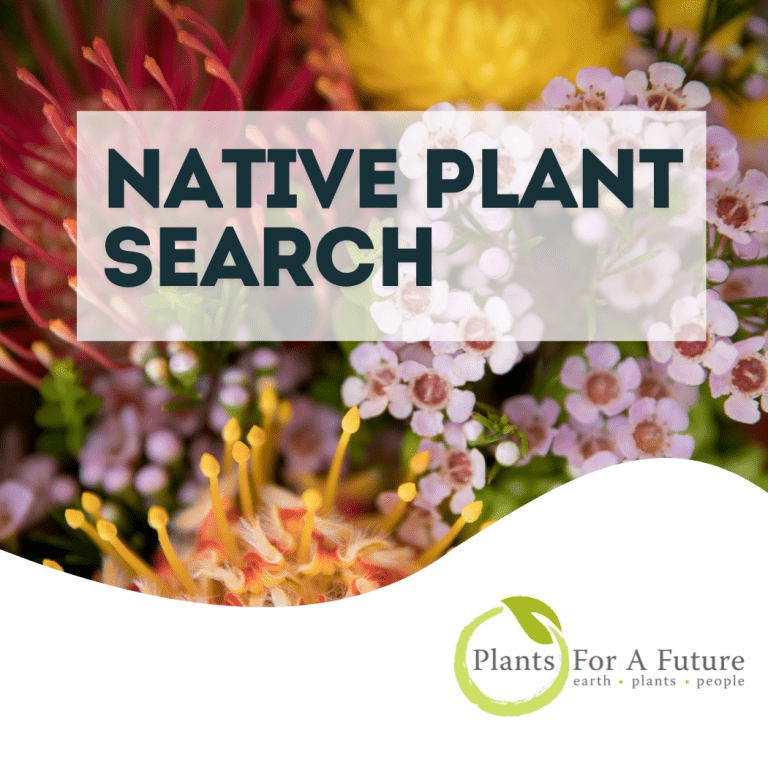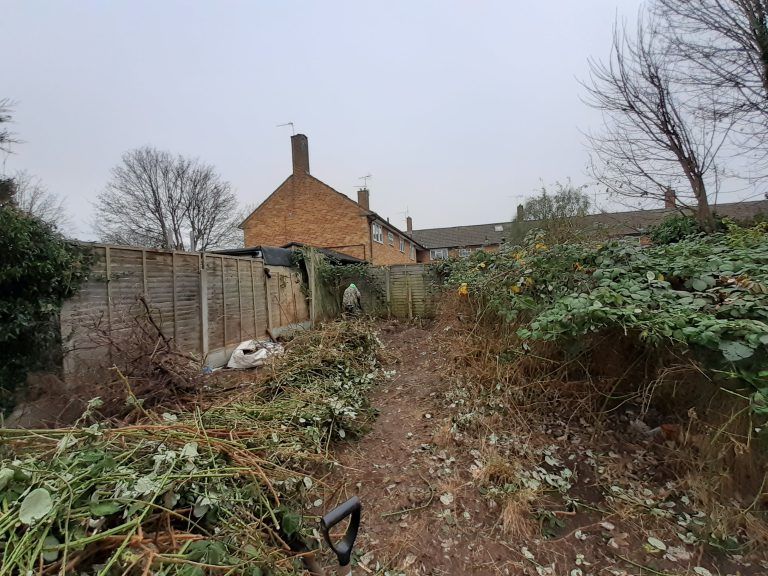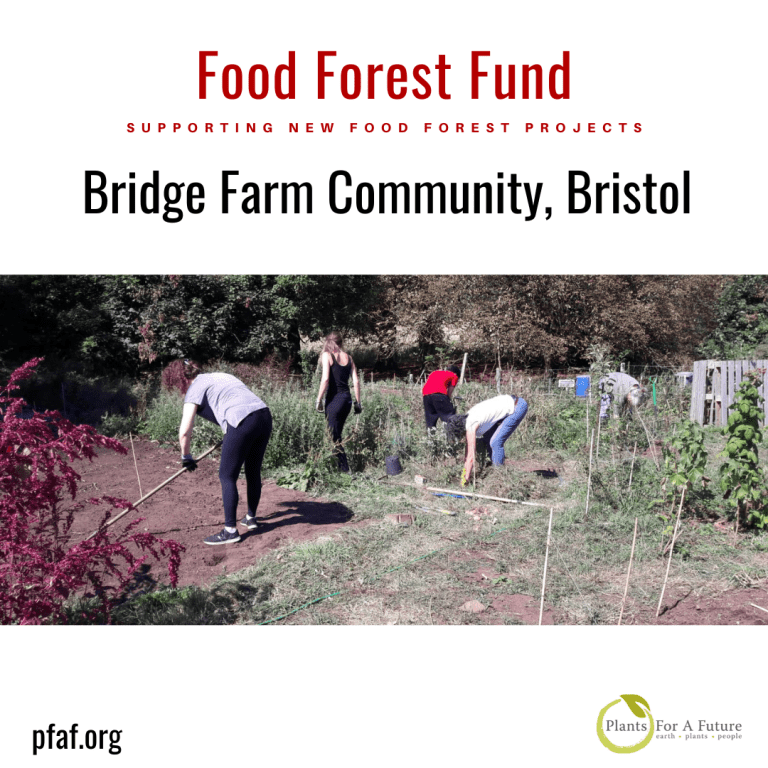On 19 June 2024 David and Chris visited the food forest project at Maes Gwyn Farm in North Wales. It was a delightfully warm day and we enjoyed being shown around the site to see the progress Dan and Cherise Hunt had made since they first applied for a grant from the PFAF Food Forest Fund in October 2022 (see report https://pfaf.org/plants/maes-gwyn-a-north-wales-food-forest-project/). We would have liked to have visited earlier but health problems and the considerable distance from our base in Devon made that impossible.
We were impressed with their design for the project, and we made two contributions towards the purchase of plants in their costed lists, one in November 2022 and another in December 2023, so it was interesting to see some of the trees and soft fruit bushes in the ground and doing well. More importantly, we were keen to learn how they were managing the site, the principles they worked to and what they were learning from the experience.

The three acres of Maes Gwyn Farm is in a delightfully scenic location with views of the Menai Strait and mountains of the Lleyn Peninsula in the distance, but this brings the challenge of exposure to strong winds (up to 70-80 mph) and the need to establish windbreaks from robust trees and hedge plants. These will take time to provide the shelter needed since a key part of Dan’s and Cherise’s learning is that it is best to plant 30 cms whips, and nothing too big, because once they take root they thrive and grow strongly. Native plants were chosen to make up the wind breaks, and already we could see these growing well.
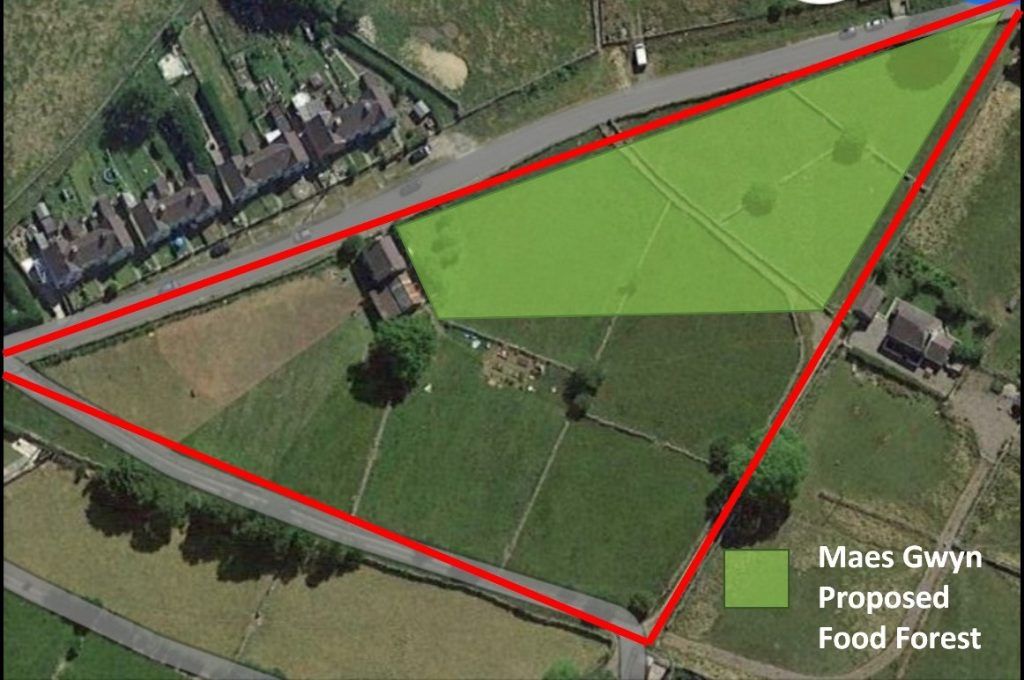
The food forest site is about an acre out of the three acres of the farm. It starts from the house, is bordered by the road, extends to a large tree in one corner, then inland to the end of a stone walled footpath which divides the plot, and then back towards the house. There are trees and bushes around the site but the predominant vegetation is grasses, and it was interesting to be told how this has been affected differently by grazing animals. In the area grazed by two adopted sheep (hand reared by family members) the grass is like a lawn, a close-cropped monoculture. In the area grazed by ponies which move around more than the sheep, the grass grows higher, with meadow-like variety of grasses and wild plants. Access by the ponies can be restricted to a route defined by electric fencing laid out in intricate shapes.
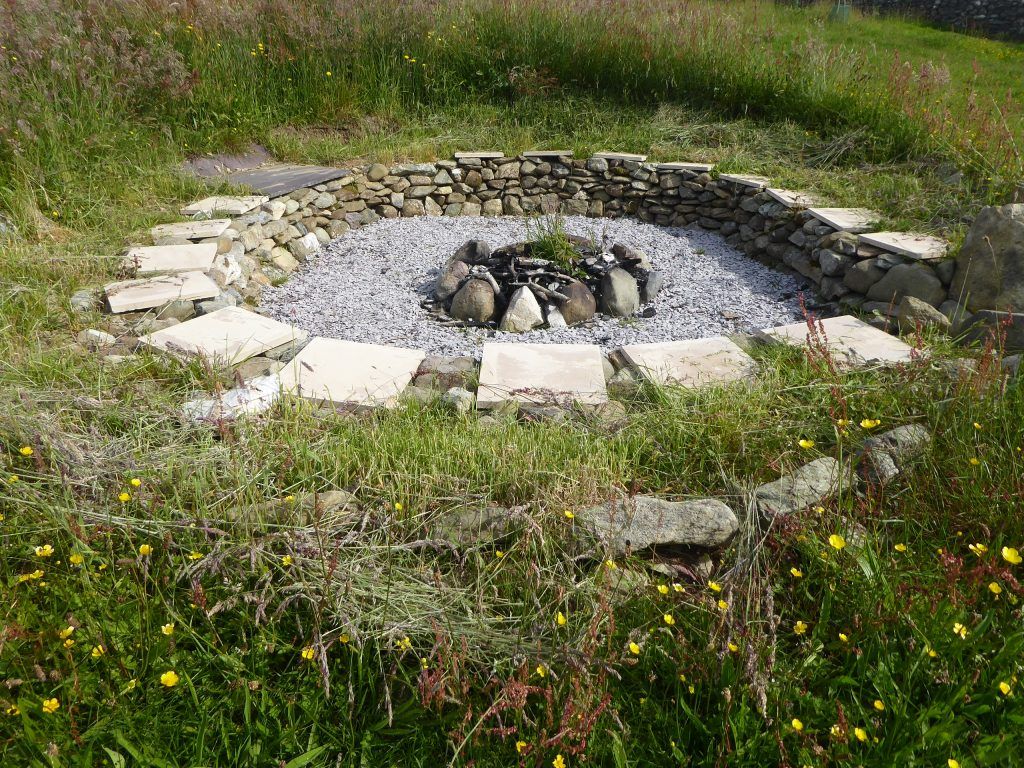
On our tour of the site, we passed the firepit built for a well-attended community event last year – a hoped-for repeat event was rained off. In all directions we saw many productive trees that have been introduced over the 8 years since Dan and Cherise took over the farm. As well as the trees and hedges planted as wind breaks, we saw well grown willows as a wood crop and for crafts, and clusters of a variety of young edible trees with various forms of support and protection, and a recently planted row of soft fruit plants.
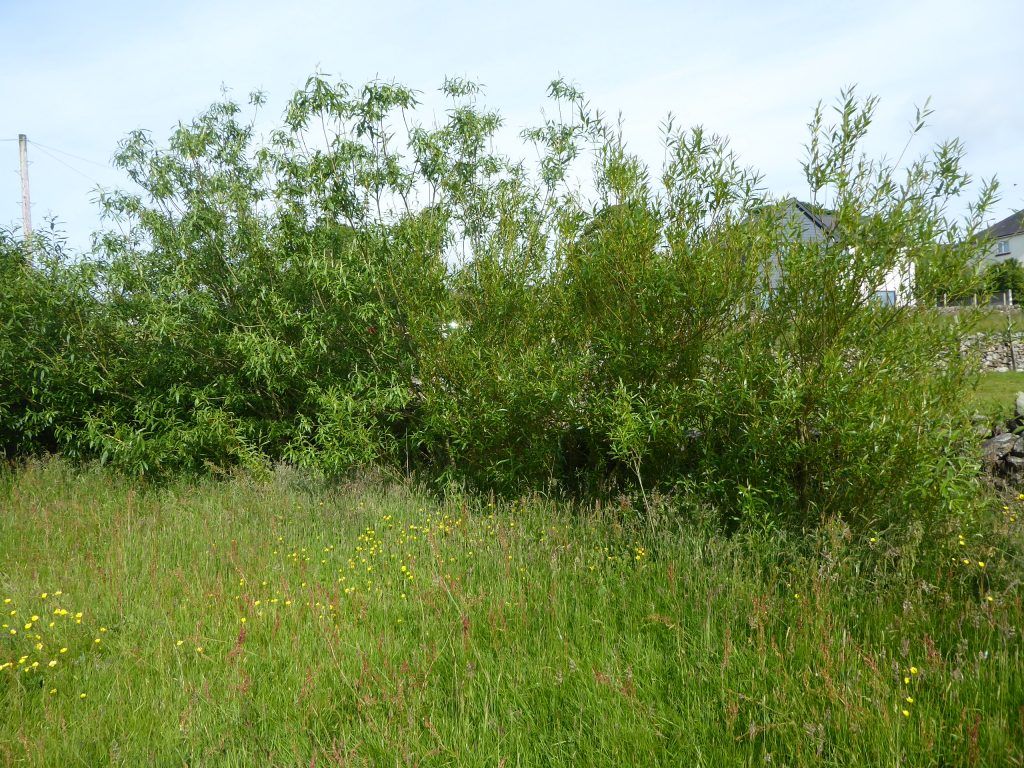
We were shown many of the plants introduced as part of the food forest project supported by PFAF. The first mentioned was a cabbage palm with a recycled guard.
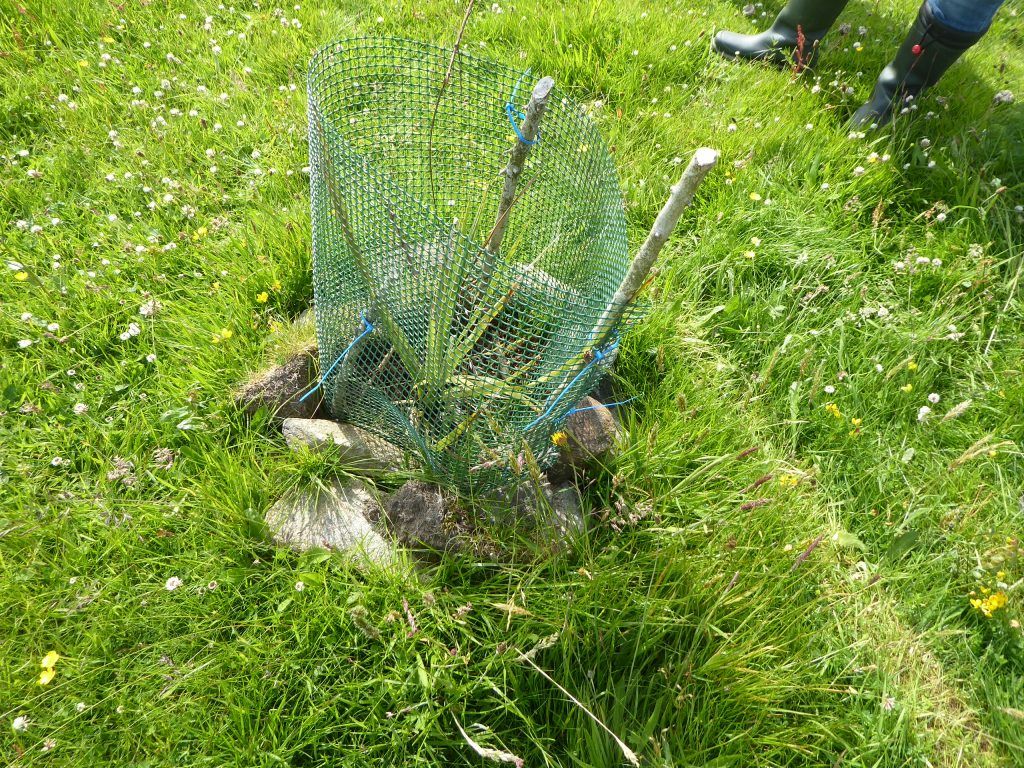
Then we came to six recently planted grape vines.
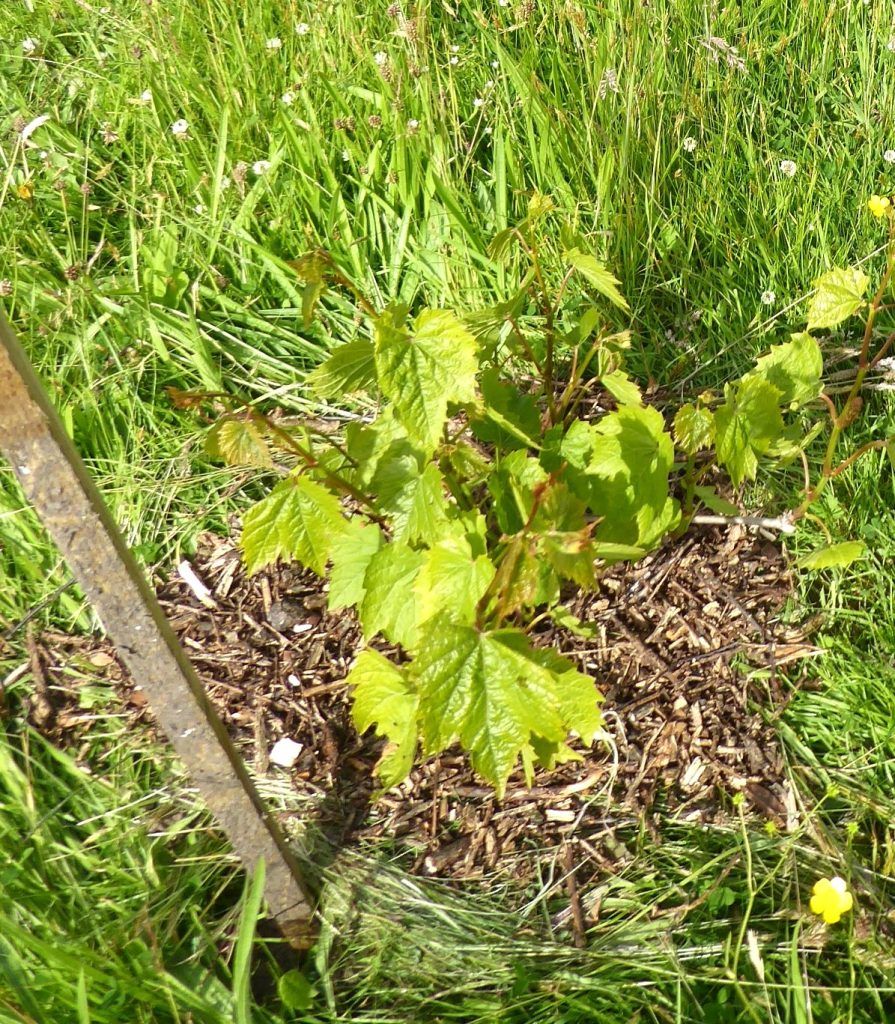
Against the wall were three kiwis, two female, one male, and a hop.
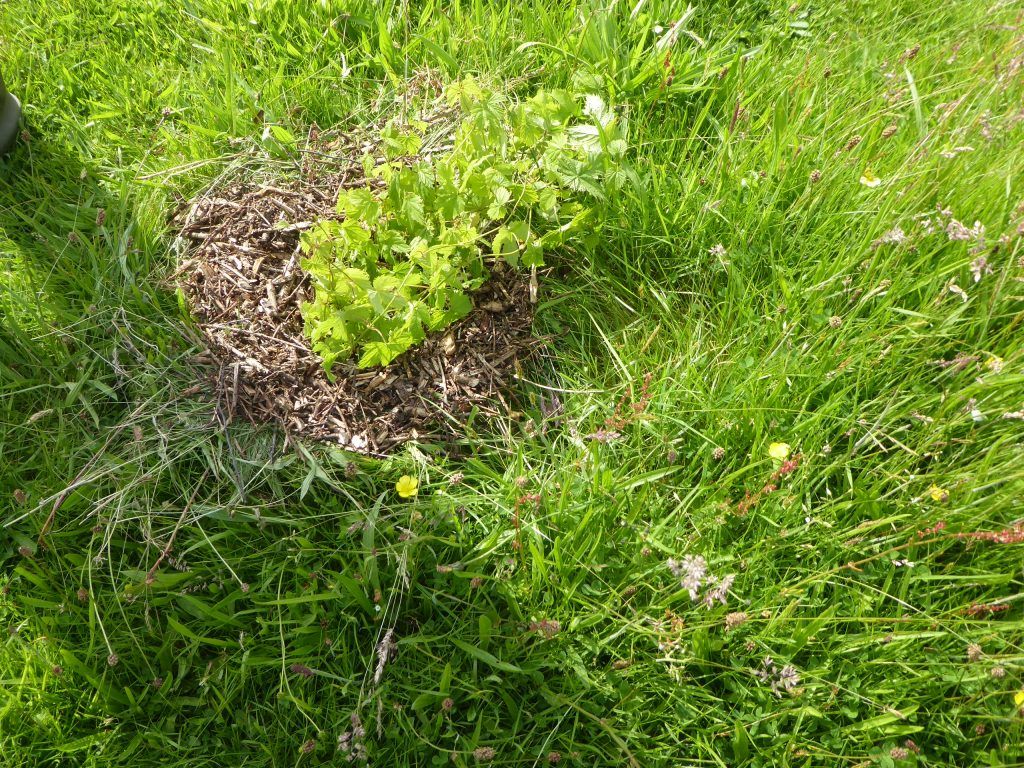
Then we encountered a sweet chestnut; its guard will be removed soon to give it space to breathe.
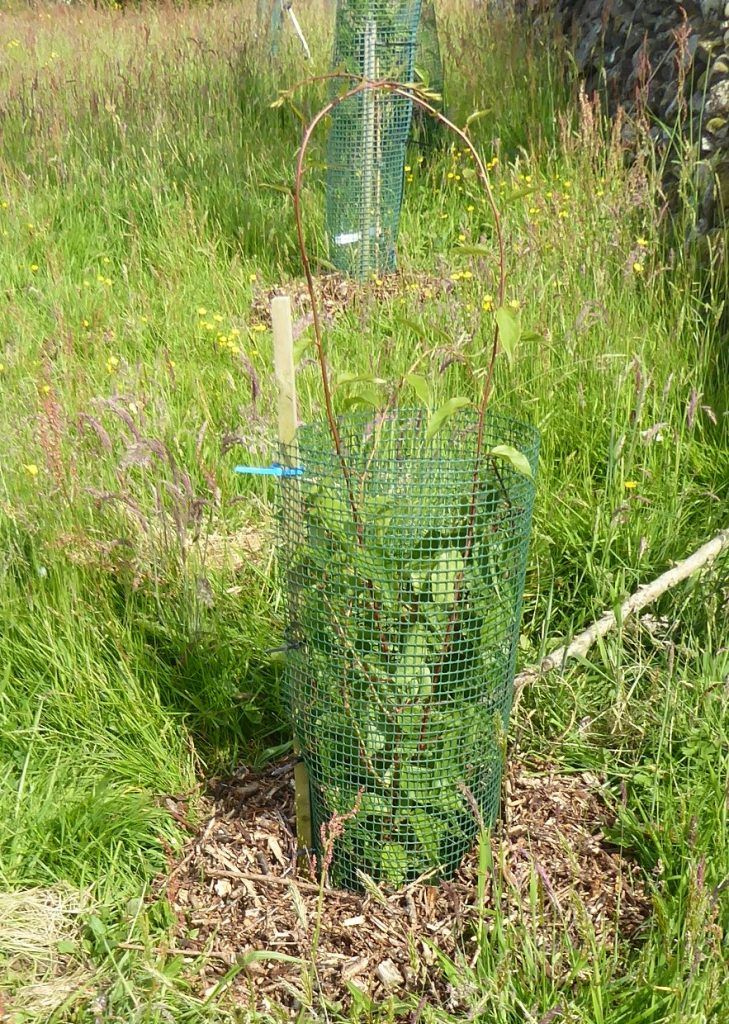
Next were two bladdernuts, and it is one of Dan and Cherise’s principles to put in two of each plant to see how they go.
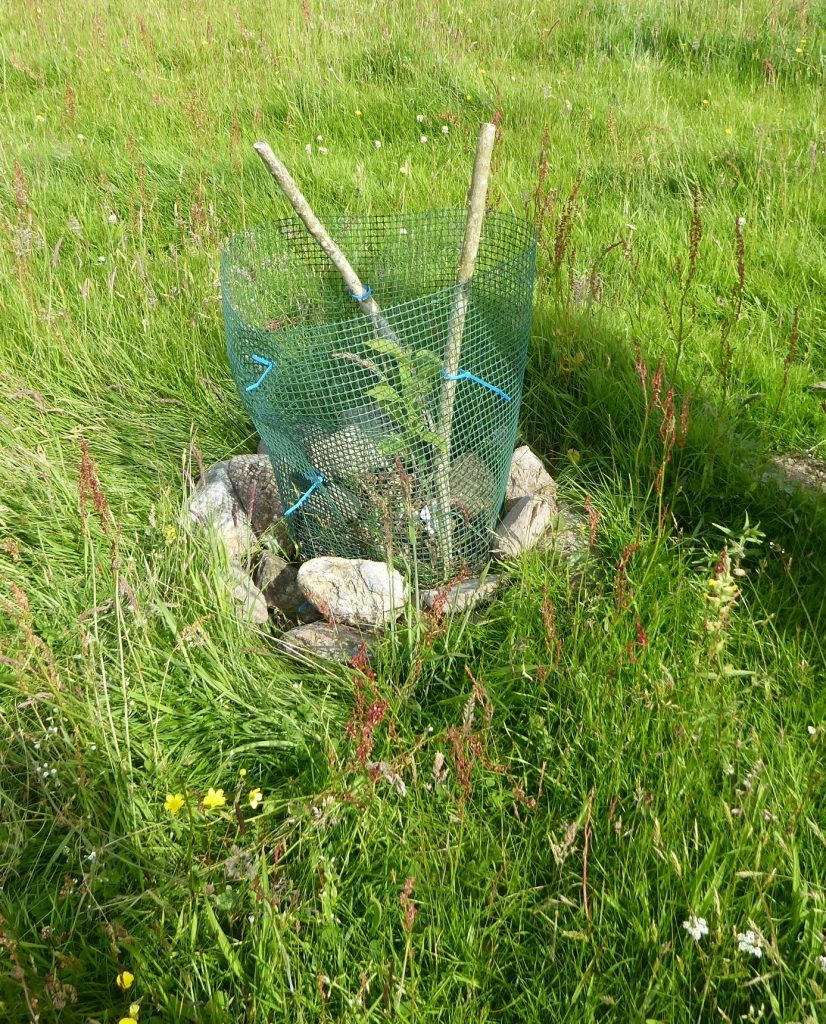
Next we saw a snowball tree.
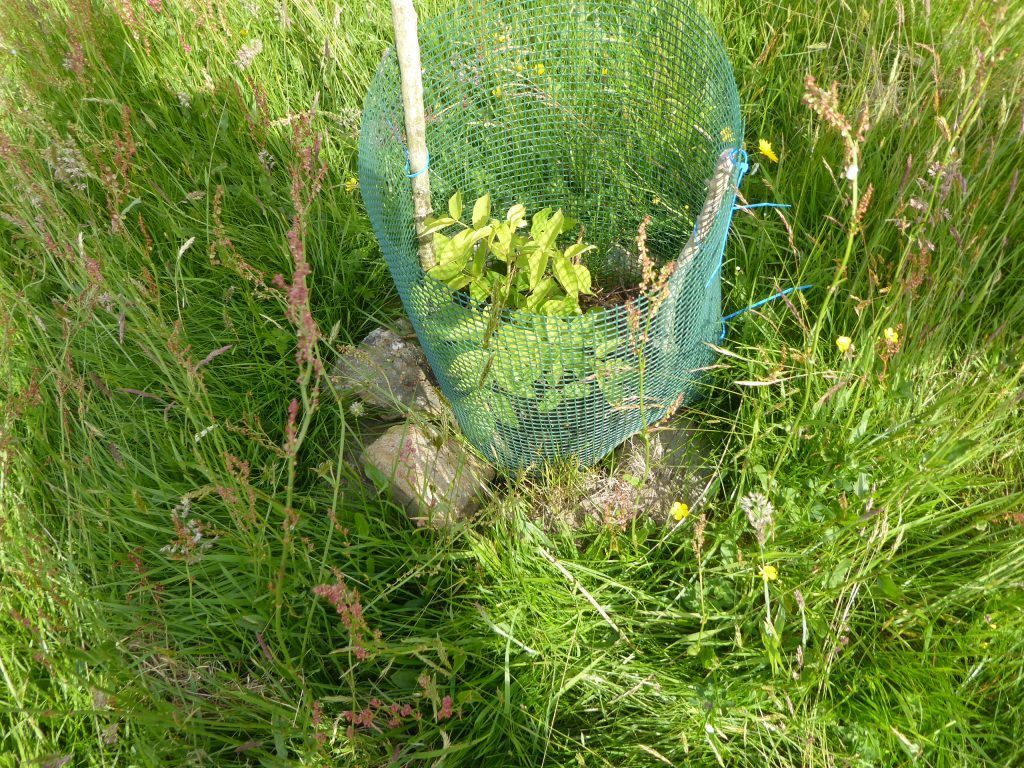
Then a fig, planted with confined roots.

Then we came to the soft fruit already mentioned, planted two months ago. Dan explained that they were planted in a row rather than in amongst other shrub layer plants to make it easier to harvest when the time comes, part of an agroforestry arrangement rather than a multi-layer food forest.
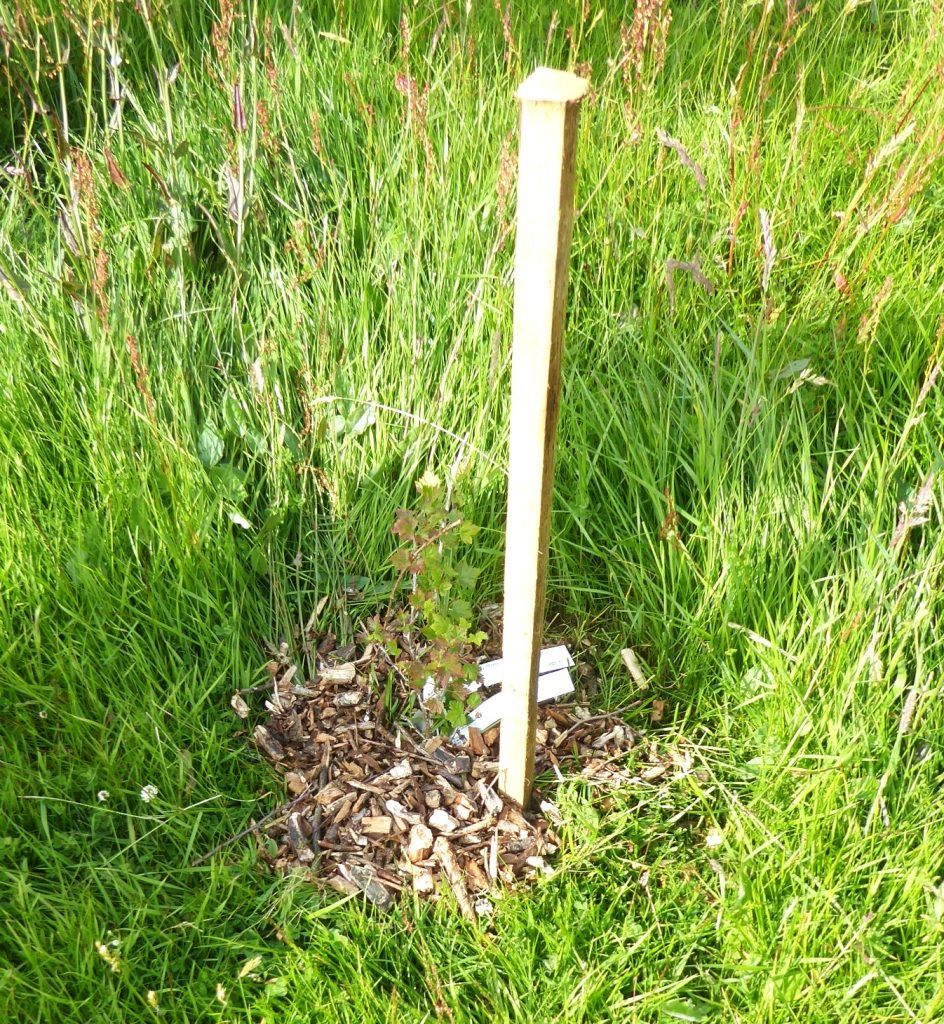
We moved on to the area beyond the footpath to the northern corner of the plot where there are apples and a quince, also a cherry plum which has already fruited. This is the area currently grazed by two sheep, which are near the end of their lives. When they have gone, more shrubs will be planted there.
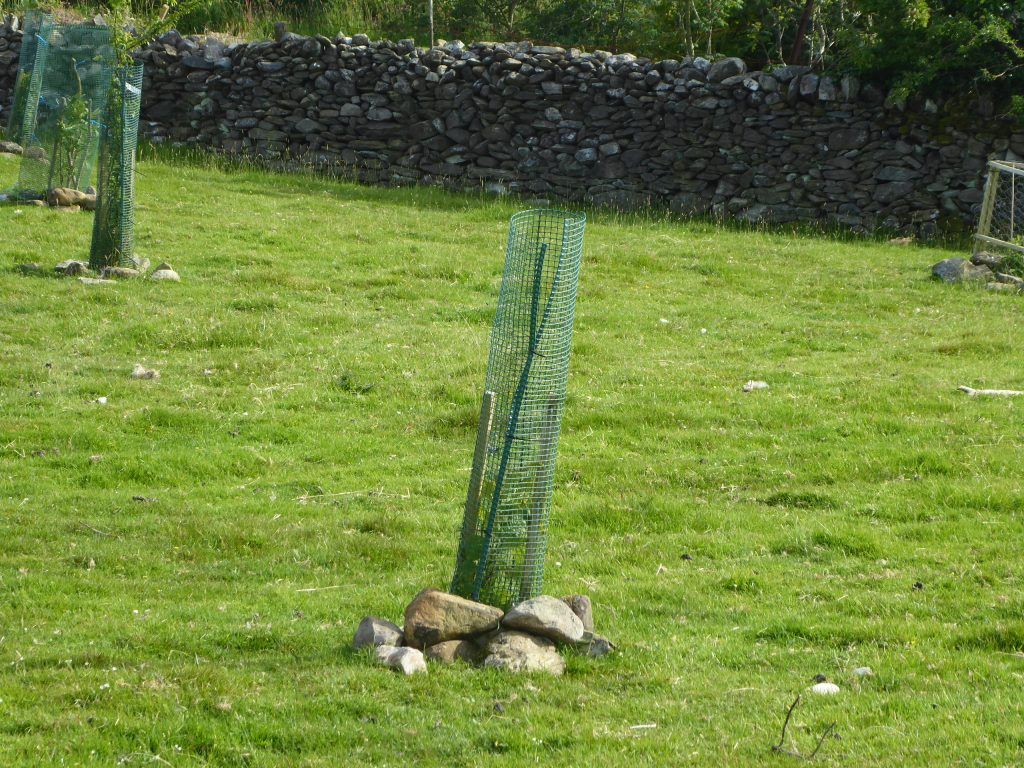
Next we walked on the footpath across the middle of the site.

This plan has cutout circles to show the spread of each plant’s mature canopy to ensure light can reach the planned herbaceous layer of edible perennials.
We paused at a bend in the wall bordering the footpath where there are dense plantings to make up a windbreak at the most exposed part of the site. We watched while Cherise guided Dan on the other side of the wall to point out plants for us to identify. Here he is pointing at sweet chestnut whips.

The plants Dan pointed out included cherry plums which make good windbreaks. There is a mulberry circle of dwarf varieties. There are crab apples and hazels as part of the windbreak, also alders which are pioneer plants and quick growing, not guarded or mulched. There are also aronia berries. On our return, Dan spoke of how enjoyable he finds his relationship with the plants. He told us earlier of his and Cherise’s principle of openness, bringing people in to share the experience of being in the land, which they see as a privilege, and feel fortunate in having land when so many people do not.
